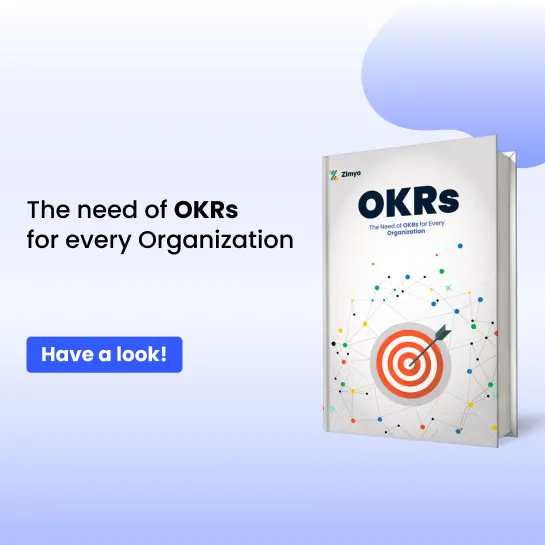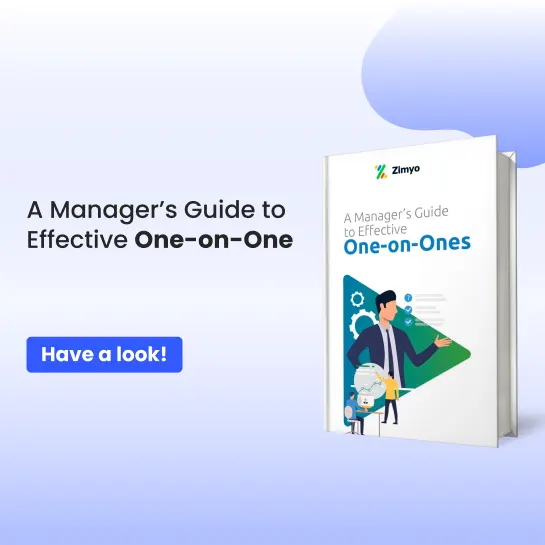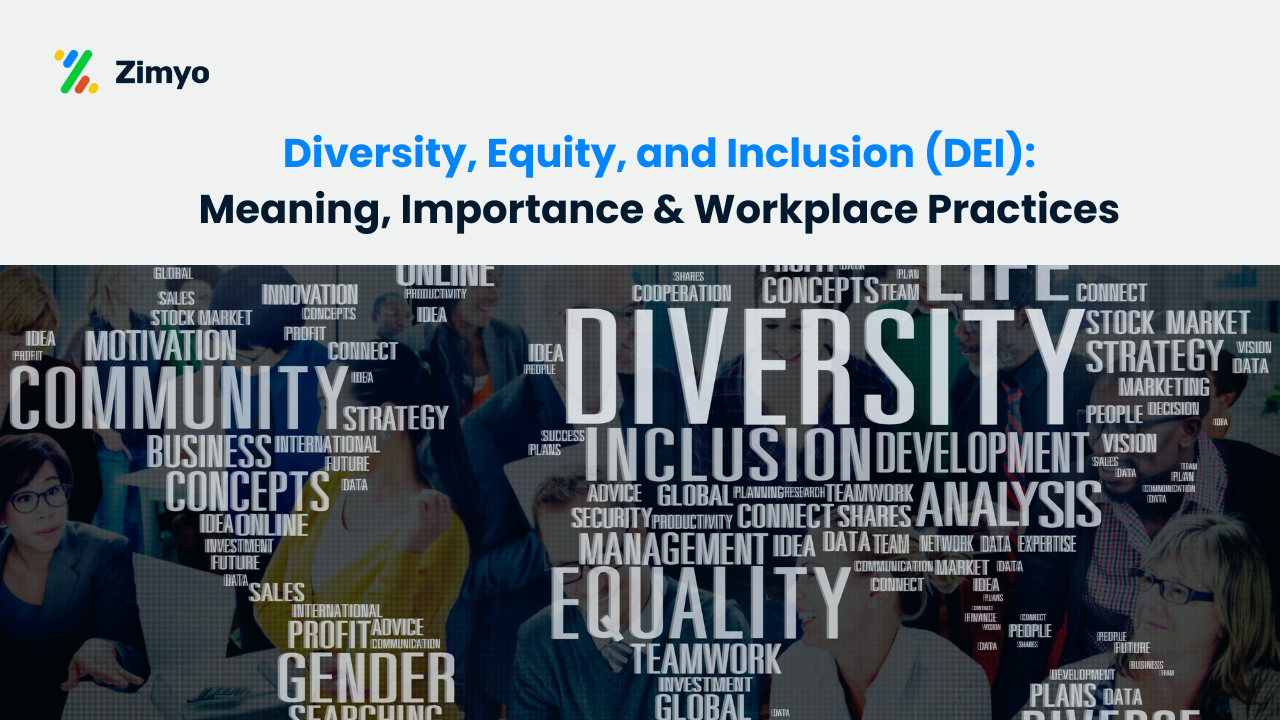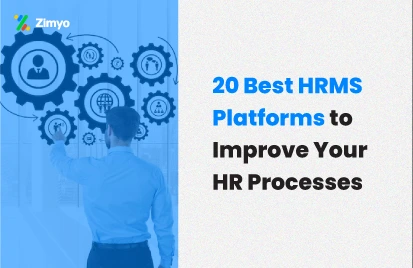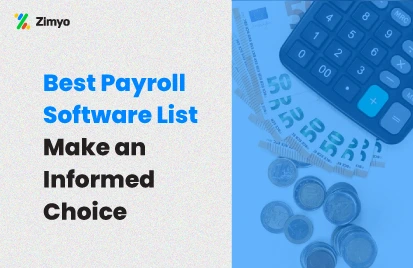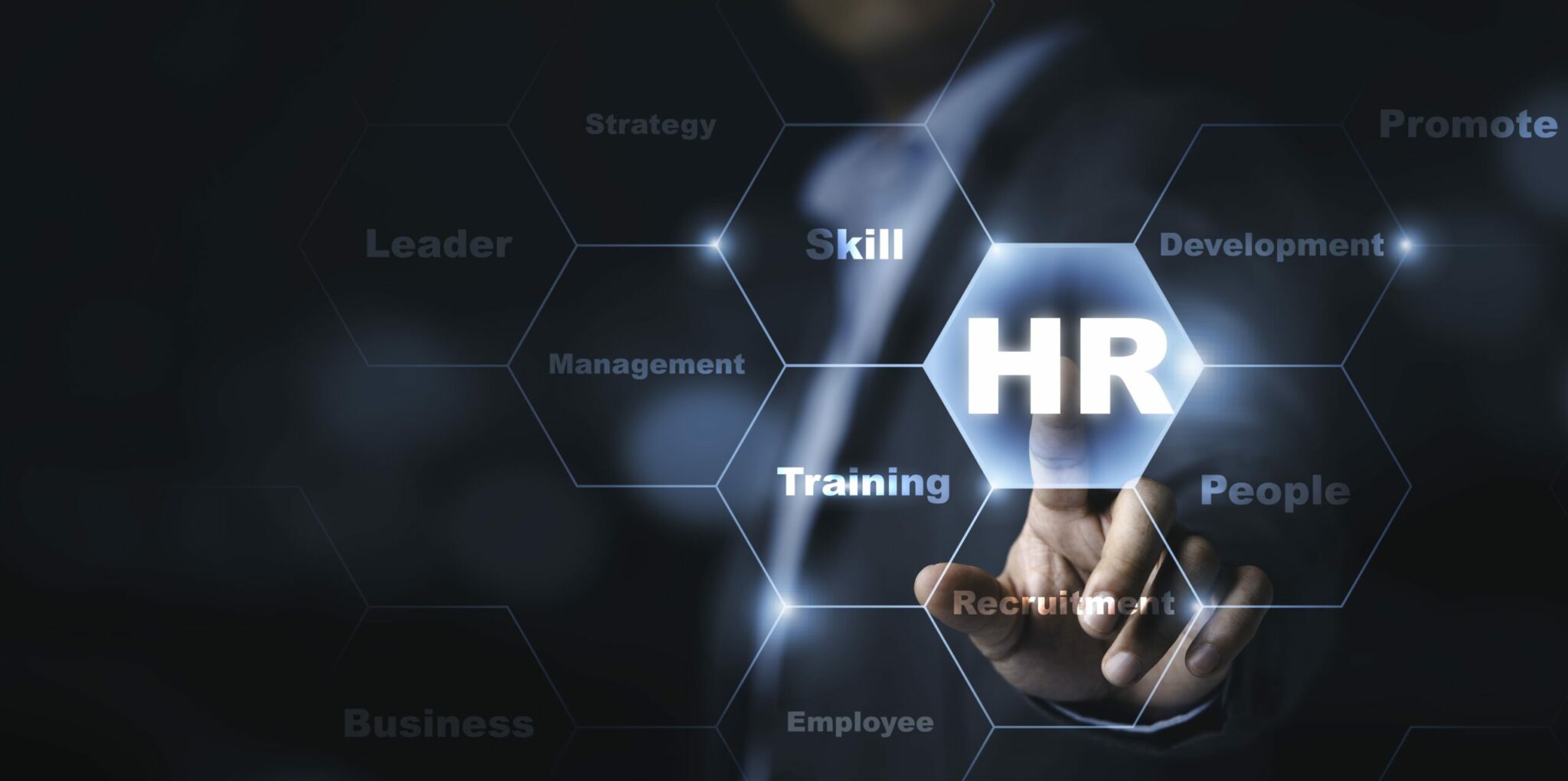If you’re an HR or someone who manages HR Department, you’d agree that in large companies managing HR is like managing a bustling airport. With thousands of moving departments, all needing to operate on time, in sync, and without costly delays. You’ve got recruitment flights landing daily, onboarding gates opening, payroll runways to clear, and performance reviews to schedule. One glitch in the system or innocent mistake and suddenly everything’s backed up.
To avoid such blunders is why HRIS software (Human Resource Information System) has become mission-critical for large enterprises. These tech advanced platforms cut down your admin work up to 80%, reduce compliance risks, and give your HR team the tools to focus on strategy building rather than spreadsheets.
In this guide, you’ll read:
- What an HRIS really is (beyond the market fuzz)
- The 11 best HRIS systems for large companies in 2025
- How they compare
- Which features are absolute must-haves
- How to shop smart for the right system
- The benefits that go far beyond payroll processing
What is Human Resource Information System (HRIS)?
Let’s understand it this way – an HRIS or Human Resource Information System is the central nervous system of your HR department.
“HRIS software is a digital platform which is designed to handle everything related to your workforce: from the moment a candidate applies, to the day they retire (and everything else in between)”.
It’s a specialized version of HR software that stores and organizes employee data but also automates key HR functions such as payroll, attendance management, performance tracking, and recruitment.
HRIS combines principles of human resource management with information technology to make HR processes faster, more accurate, and easier to manage on a large scale.
HRIS Full Form
Human Resource Information System.
Key HRIS Capabilities Include:
- Recruitment & Applicant Tracking (ATS) – posting jobs, tracking candidates, and managing interviews.
- HRIS Payroll – automating salary calculations, deductions, and tax compliance.
- Performance Management System – setting goals, tracking progress, and reviewing performance.
- Employee Management System – maintaining complete employee profiles, organizational charts, and reporting lines.
- Employee Time Tracking & Attendance Management – tracking work hours, shifts, and leave.
- Analytics & Reporting – providing actionable insights for better decision-making.
In short, your HRIS is not just a database, it’s the control tower of your workforce operations.
Check Out Our to Know The Difference Between HRMS vs HRIS vs HCM
List of 11 Best HRIS Systems for Large Companies
1. Zimyo
2. Rippling
3. BambooHR
4. Workday
5. UKG
6. Deel, Inc.
7. Paycor
8. Paylocity
9. ADP Workforce Now
10. Gusto
11. SAP SuccessFactors
Top HRIS Systems for Large Companies: In Detail
Here’s a deeper look at the top HRIS examples for enterprise-scale workforce management.
1. Zimyo
If you want a human resources information software that doesn’t just manage employees but actively boosts engagement and efficiency, Zimyo should be your first stop. Built with both scale and simplicity in mind, it’s designed for large organizations that don’t want to wrestle with clunky legacy systems.
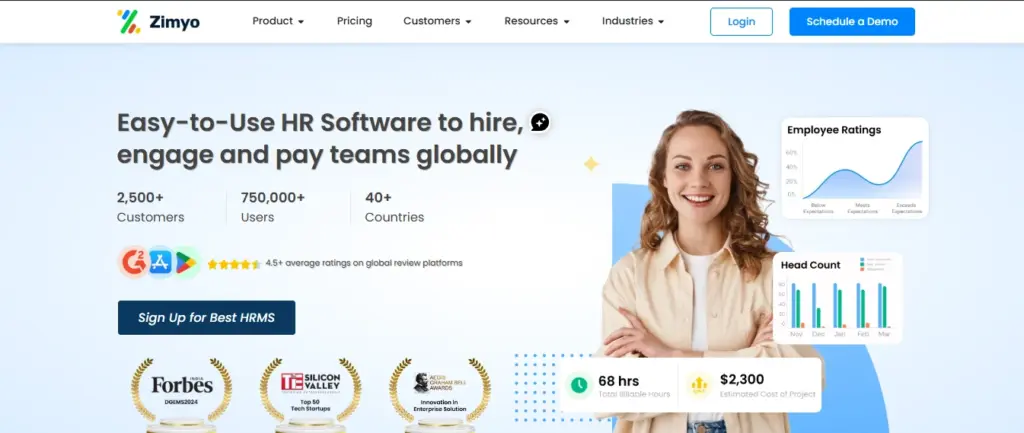
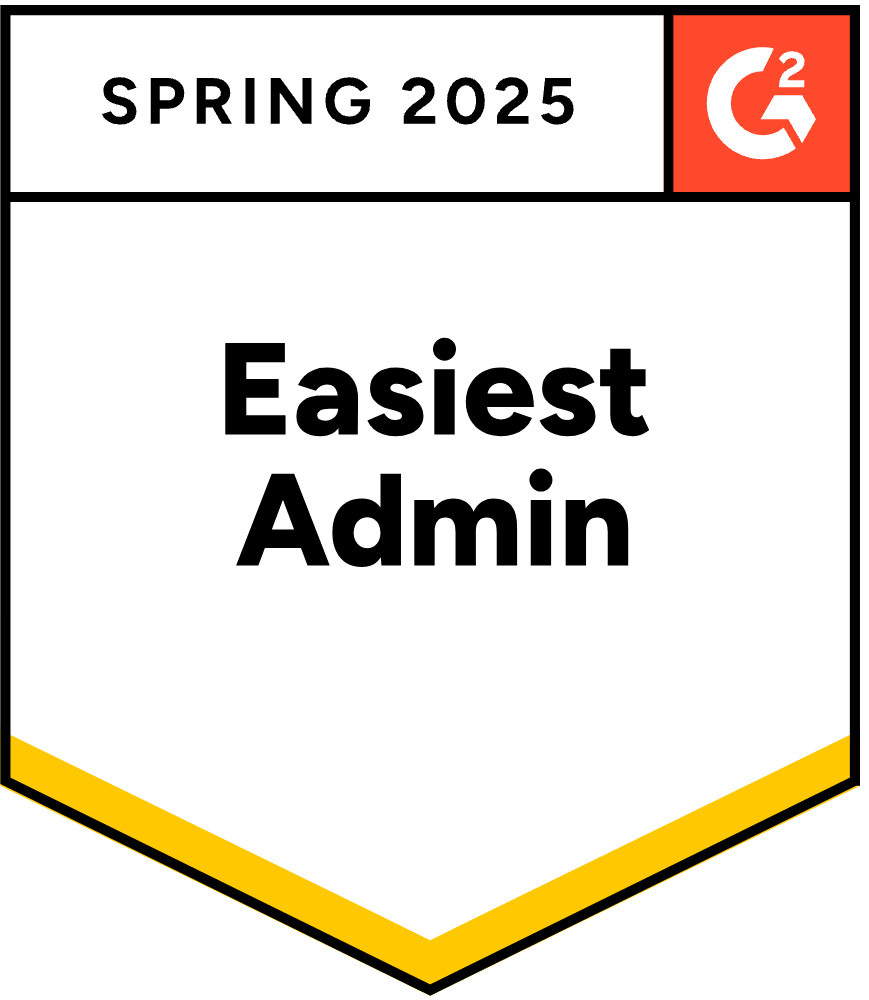
Enhanced Capabilities for Large Companies:
- Unified suite covering recruitment, onboarding, payroll, performance, and employee engagement.
- HRIS payroll automation with full compliance for Indian and global markets (PF, ESI, TDS, tax filings).
- Advanced employee management system features including department mapping, role hierarchy, and skill tracking.
- Employee self-service portals for instant leave applications, payslip downloads, and attendance logs.
- Deep analytics for absenteeism, attrition, and performance metrics.
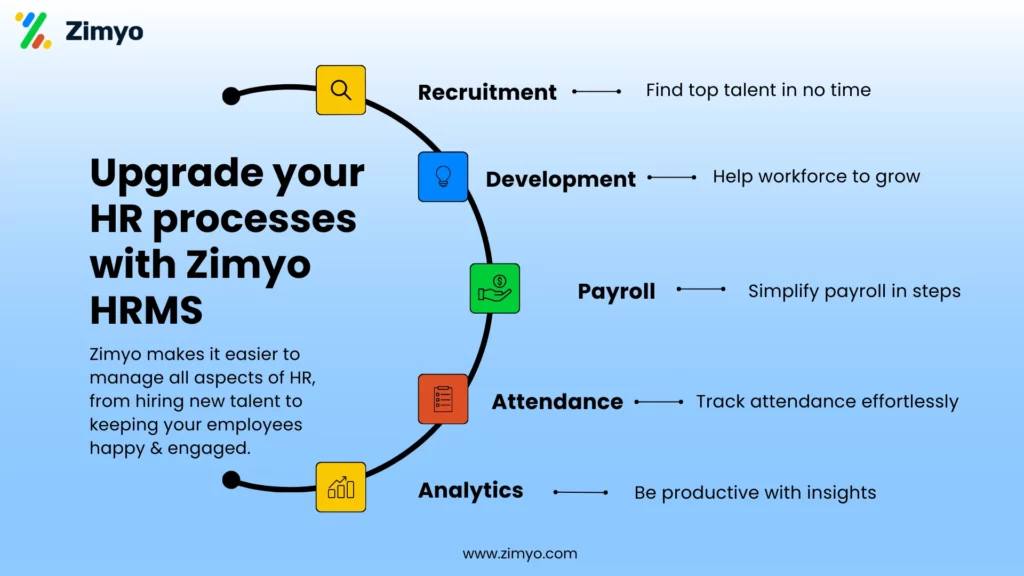
Pros:
- All-in-one platform, reduces need for multiple tools
- Scalable architecture for thousands of employees
- Modern UI with short learning curve
- Strong local compliance + global support
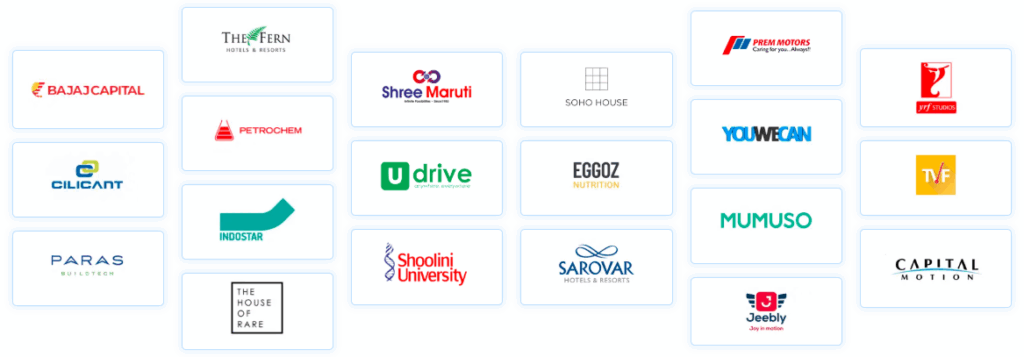
Cons:
- Rich feature set may feel overwhelming at first
- Best value in annual plans (monthly pricing slightly higher)
2. Rippling
Rippling isn’t just an HRIS, it’s also your IT department’s new best friend. Perfect for large companies that need both employee management and tech provisioning in one place.
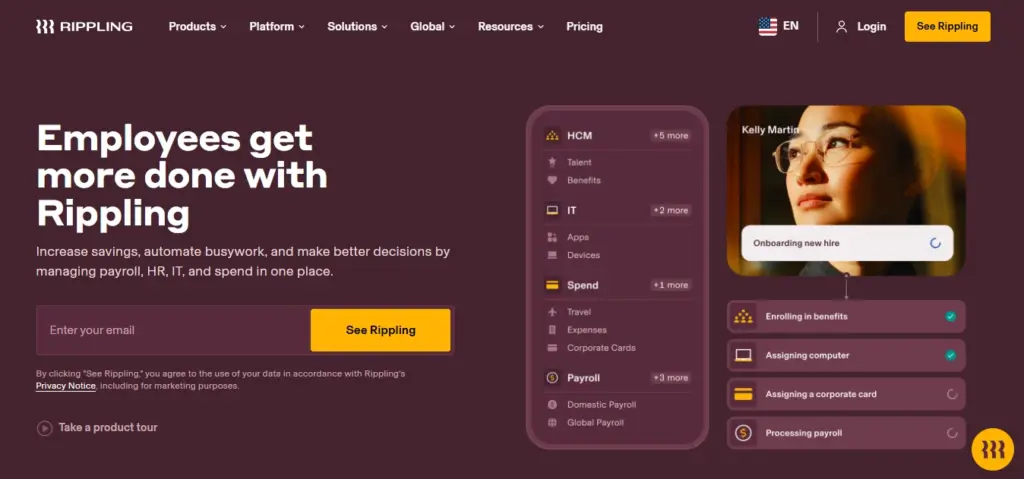
Why Enterprises Like It:
- Manage HR, IT, and finance from a single dashboard
- Auto-provision laptops, apps, and accounts for new hires
- Global payroll with tax compliance in multiple countries
Pros:
- Unique HR + IT capabilities
- Excellent for remote and distributed teams
- Strong integrations with popular business tools
Cons:
- More expensive than many HRIS options
- May offer more IT features than HR-only teams need
3. BambooHR
BambooHR is ideal for companies that want their human resource information tools to feel… well, human. The clean UI and focus on culture make it a popular choice. It offers a user-friendly interface with an intuitive design, making it a preferred choice for teams aiming to digitize and streamline their HR operations.
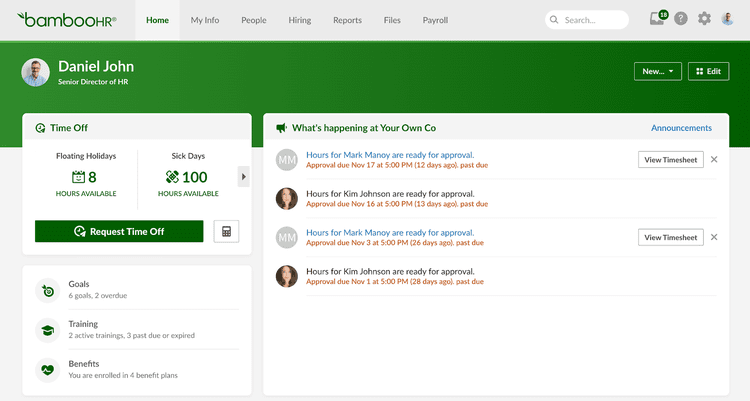
Enterprise Highlights:
- Applicant Tracking System (ATS) for streamlined hiring
- Built-in performance management system
- Time tracking, leave management, and reporting
Pros:
- Very user-friendly interface
- Strong mobile app for managers & employees
- Excellent customer support
Cons:
- Payroll is add-on only (not in base package)
- Limited customization for complex org structures
4. Workday
Workday is the big gun in HRIS software, tailored for global corporations with thousands of employees. Designed to scale for large enterprises, it includes modules for everything from talent management to financial planning, making it popular with Fortune 500 companies.
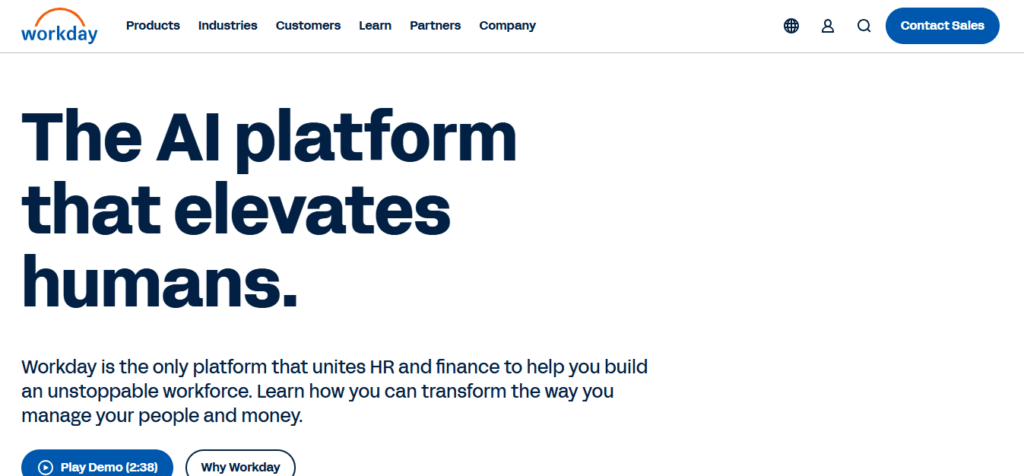
Why Big Companies Choose It:
- End-to-end HR, finance, and planning in one suite
- Advanced workforce analytics and forecasting
- HRIS payroll integration with strong compliance
Pros:
- Extremely robust & scalable
- Global compliance support
- Ideal for data-driven HR
Cons:
- Expensive implementation
- Steeper learning curve
5. UKG
UKG combines a strong performance management system with powerful scheduling and attendance management tools.
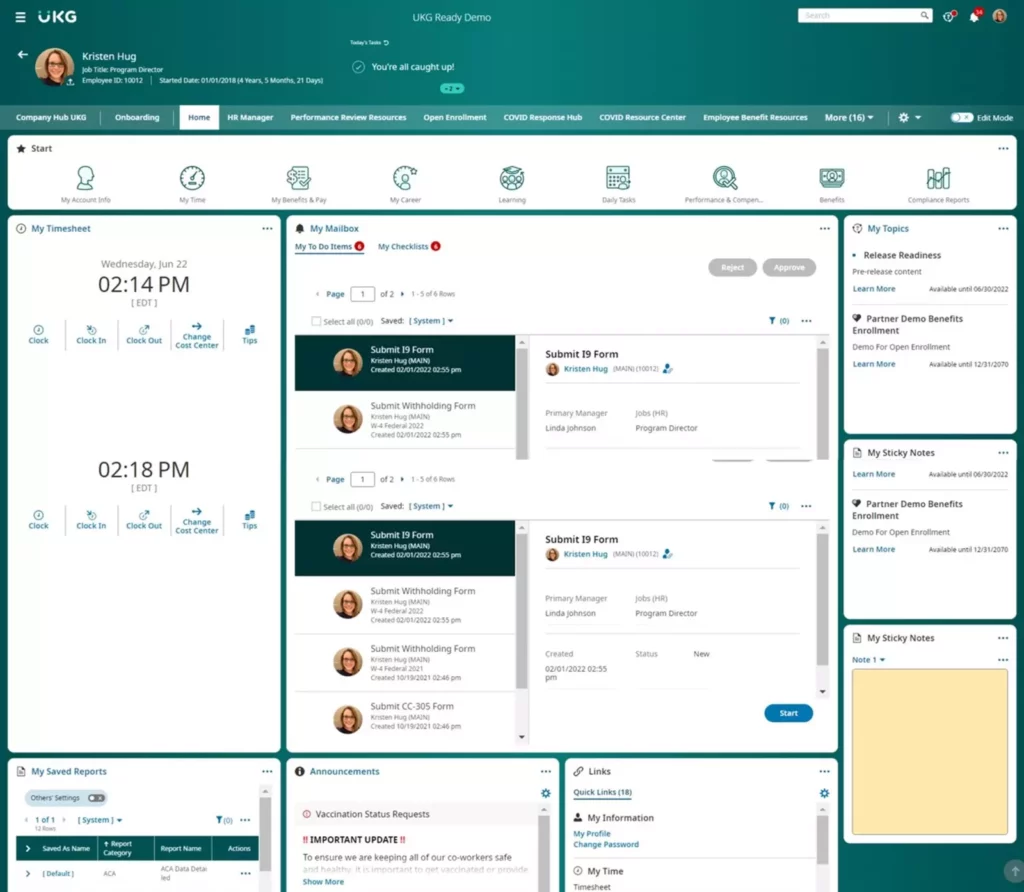
HRIS Highlights:
- AI-powered employee engagement surveys
- Complex scheduling for shift-based industries
- Global payroll and compliance
Pros:
- Excellent for time-sensitive workforces
- Great analytics on workforce productivity
- Flexible deployment options
Cons:
- Interface can feel dated
- Customization takes time
6. Deel, Inc.
For large companies with international teams, Deel offers human resource information tools plus legal and payroll compliance in over 150 countries. It is perfect for managing a remote or global workforce covering everything from hiring, paying to managing employees.
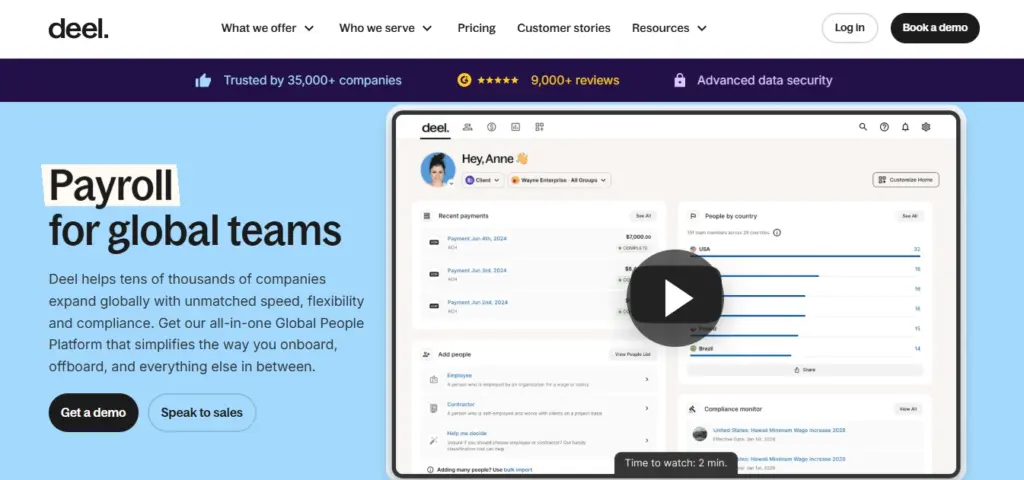
Enterprise Highlights:
- Contractor & employee onboarding in minutes
- Multi-currency HRIS payroll
- Automated tax & legal compliance
Pros:
- Unmatched global reach
- Transparent, all-in pricing
- Great for remote-first companies
Cons:
- Limited non-payroll HR features
- Not ideal for companies operating only domestically
7. Paycor
Paycor blends HRIS software functionality with advanced analytics, making it a favorite for leaders who want HR data to drive strategy. It’s ideal for companies aiming to simplify recruitment, onboarding, and learning and development (L&D) processes.
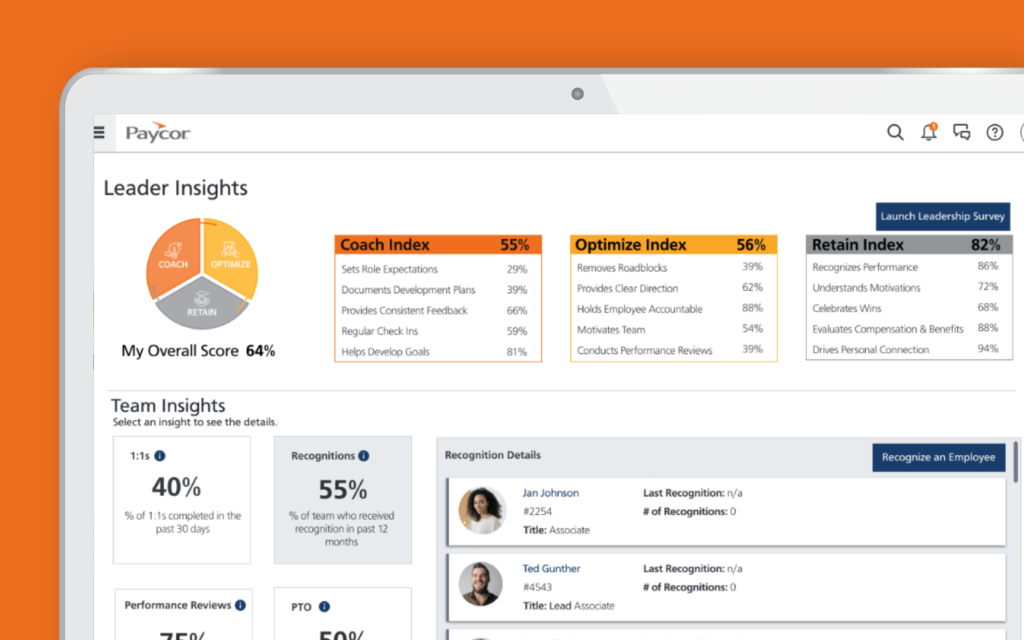
Enterprise Highlights:
- ATS and recruitment tools
- Payroll with tax compliance automation
- Performance and learning management modules
Pros:
- Deep analytics & custom dashboards
- Comprehensive payroll functions
- Scalable for multi-location businesses
Cons:
- Interface not as modern as some competitors
- Setup takes time for large teams
8. Paylocity
Paylocity emphasizes employee engagement alongside traditional HR processes. It offers an all-in-one HR and payroll solution that emphasizes collaboration, employee engagement, and self-service, making it a great fit for large businesses seeking a unified platform.
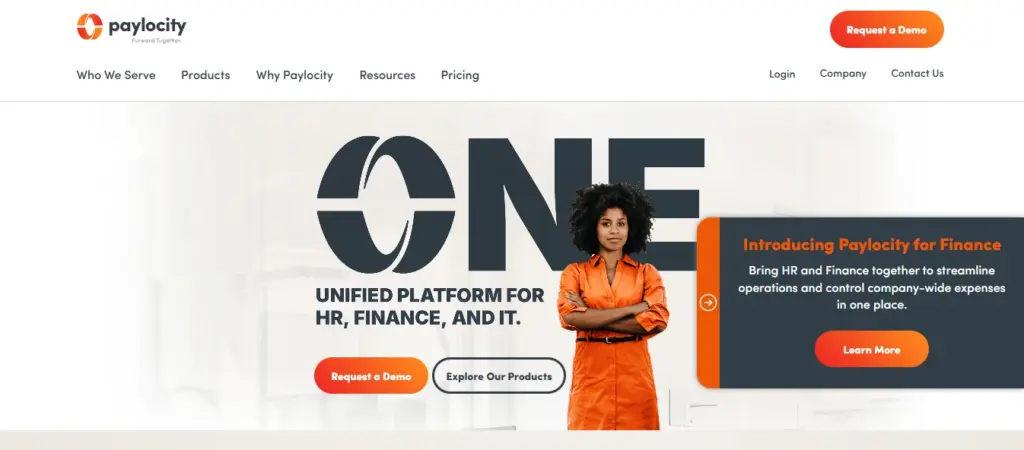
Enterprise Highlights:
- Built-in social collaboration platform
- Time & attendance management
- Mobile-first HRIS payroll
Pros:
- Strong engagement and culture tools
- Easy-to-use mobile interface
- Good mix of HR and payroll features
Cons:
- Learning curve for non-technical users
- Some advanced features cost extra
9. ADP Workforce Now
ADP has been in the human resource information game for decades, and Workforce Now is their large-enterprise flagship.
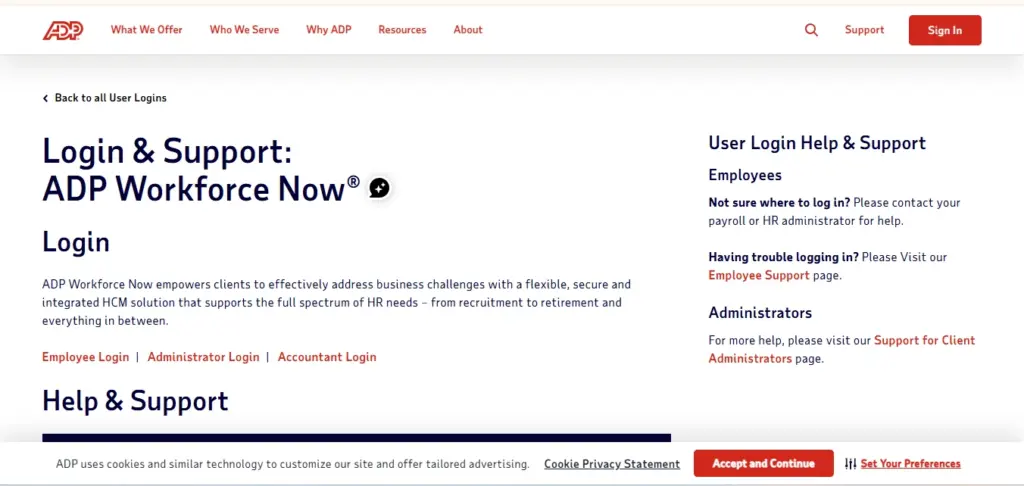
Enterprise Highlights:
- Payroll and compliance automation
- Talent management & onboarding tools
- Benefits enrollment and administration
Pros:
- Extremely reliable and proven
- Strong compliance automation
- Scalable for global teams
Cons:
- Interface feels dated
- Pricing can be opaque
10. Gusto
Gusto is best known among SMBs, but its features can scale for mid-to-large organizations seeking simplicity. It’s popular for its payroll and benefits administration, is a top choice for US-based companies. Originally built for small businesses, it now offers robust features suited for large organizations, especially in financial and HR compliance.
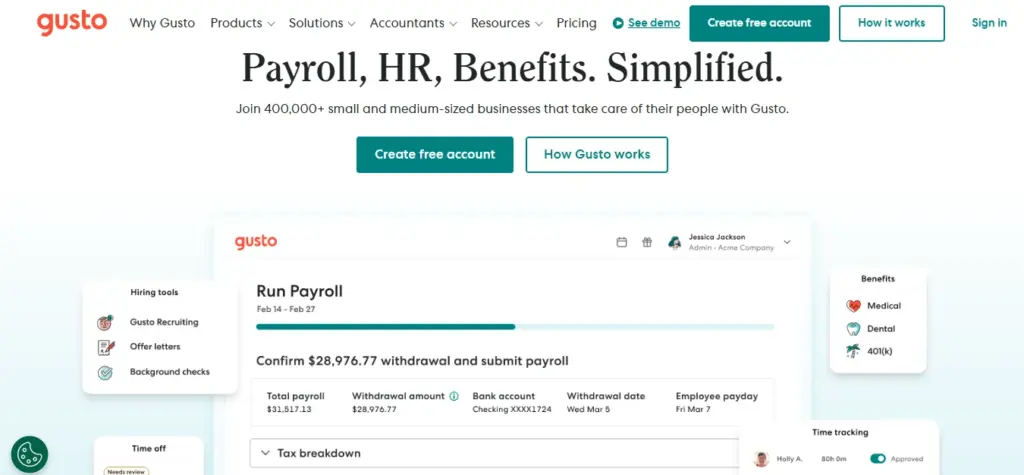
Key Features:
- Easy-to-use payroll & benefits management
- Employee time tracking & onboarding
- Integrates with performance tools
Pros:
- Very intuitive for new users
- Affordable compared to big players
- Great support for U.S.-based teams
Cons:
- Limited global capabilities
- Lacks some advanced enterprise HR features
11. SAP SuccessFactors
SAP SuccessFactors is the heavyweight champion for human resource information customization. SAP SuccessFactors combines core HR functions with talent management capabilities, giving its customers flexible deployment options for their specific needs.
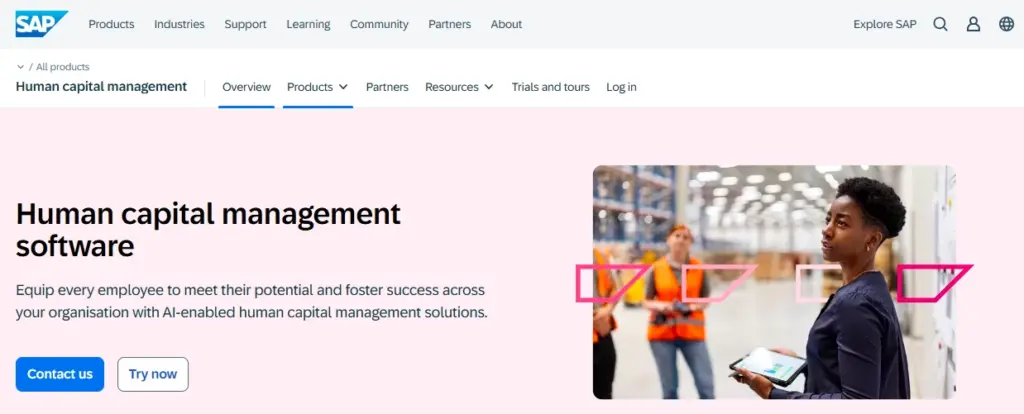
Enterprise Features:
- Advanced recruitment and onboarding
- Performance management system & succession planning
- Deep workforce analytics and time tracking
Pros:
- Highly customizable for complex orgs
- Strong global HR compliance tools
Cons:
- Long implementation cycles
- Steep learning curve for admins
Comparison Table: Top HRIS Syatems for Large Companies
HRIS System | Best For | Key Strength |
Zimyo | Large companies wanting all-in-one HR | Full-stack HR with ease of use |
Rippling | HR + IT management | Device & app provisioning |
BambooHR | People-first companies | Clean interface & ease |
Workday | Global enterprises | Advanced analytics |
UKG | Scheduling-heavy orgs | Workforce management |
Deel | International teams | Global compliance |
Paycor | Data-driven HR | Analytics & insights |
Paylocity | Employee engagement | Social collaboration |
ADP Workforce Now | Established enterprises | Compliance automation |
Gusto | Simple HR for growing teams | User-friendly payroll |
SAP SuccessFactors | Global customization | Enterprise scalability |
Non-Negotiable Features to Have Inside the HRIS Toolbox
When you think of buying a car the first thing you do is look for its features, you wouldn’t skip the essential features right? The same concept applies when you are thinking of choosing an HRIS. Your HRIS should come equipped with certain “must-haves” that will keep your HR engine running smoothly:
- Employee Self-Service Portals – this gives employees the power to access payslips, apply for leave, update personal info, and manage benefits without swarming HR’s inbox.
- Payroll Integration – It ensures a timely payroll processing minimizing manual entry, eliminating any duplicate work, and also keeping compliance in check.
- Leave & Attendance Tracking – Real-time tracking ensures accuracy in payouts and prevents awkward “You owe me overtime” conversations with HR.
- Compliance Management – Contains automated updates for labor laws, any recent tax changes, or industry regulations to help you sleep better at night.
- Data Analytics & Reporting – From analyzing turnover rates to performance metrics, these insights help HR make smart, strategic moves.
Keep in mind:
Adopting to a HRIS may require training for smooth transition.
Some advanced features can be locked behind premium plans.
What to Look for When You’re on the HRIS Treasure Hunt
Shopping for an HRIS shouldn’t be like grabbing the first shiny tool you see, it’s more like hunting for buried treasure. You need a sharp eye, patience, and a checklist to ensure you’re walking away with gold, not glitter. Here’s what you should keep on your radar:
- Scalability – Your HRIS should grow as your team grows, irrespective of whether you’re a startup or a rapidly growing enterprise.
- Ease of Use – If your team can’t figure it out without a manual the size of “War and Peace,” and giving 100 calls to the customer support – it’s a problem.
- Mobile Accessibility – In an era where remote work is the norm, a mobile-friendly HRIS is non-negotiable.
- Integration Capabilities – Your HRIS should play nice with payroll, ATS, performance management, and collaboration tools.
- Customer Support – Even the best tech can throw a tantrum, so reliable support is a must.
Pro Tip: Always request a demo or free trial. It’s like test-driving before committing – you’ll quickly see if it’s a dream ride or a nightmare for your organisation.
Benefits of Having an HRIS or HCM in Your Corner
The best HRIS software doesn’t just save time but also delivers measurable results. Let’s break it down from two different perspectives:
For Employees
- Faster Onboarding – Companies with integrated HRIS systems report up to 32% faster onboarding, reducing time-to-productivity for new hires.
- Self-Service Access – Employees can view payslips, update details, and request leave in seconds, cutting down admin queries by 40%.
- Flexible Access Anywhere – Mobile-friendly platforms boost engagement and response times by 25%.
For HR & Admin Teams
- Time Savings – Automating payroll, attendance, and leave tracking can cut manual work by 50–60%.
- Improved Accuracy – Error rates in payroll and compliance drop by up to 80% with automation.
- Better Decision-Making – Real-time analytics help HR teams identify trends, reduce attrition, and improve workforce planning.
Bottom line is with the right HRIS or HCM, you’re not just streamlining HR – you’re future-proofing it.
I was able to implement the platform on my own. It helps in assigning the tasks to other employees, conducting surveys and polls, and much more. The ease of use and self-onboarding is something that I would like to appreciate.
Sonali, Kommunicate
Zimyo simplifies attendance management for our organization. The leave and attendance are so streamlined that we have never faced any difficulties with the system.
Anurag, Eggoz Nutrition
Common Mistakes to Avoid When Choosing an HRIS
You might have good intentions but still you can make these costly missteps when investing in a Human Resource Information System (HRIS) which we discuss in detail in this section. By avoiding these pitfalls you’ll get maximum ROI and a system your team actually loves to use. Let’s begin-
1. Overpaying for Unused Features
Most HRs/business heads get swayed by feature-heavy packages, and later they realize that they’re paying for tools they never use. So, it’s always to start by mapping your HR needs, then choosing a plan that aligns with your current priorities while keeping growth in mind.
2. Ignoring Employee Adoption Training
A powerful HRIS is useless if your team doesn’t know how to use it. Neglecting proper onboarding and training can possibly lead to frustration among employees, and a low adoption rate, which means a wasted investment on your part. To avoid all of this choose a vendor that offers comprehensive training and ongoing support during implementation.
3. A System Without Mobile Support
Today everyone is on the run and wants instant results and the same they expect in accessing HR services on the go – whether it’s for applying a leave, viewing payslips, or updating employee personal details. Skipping mobile-friendly features can reduce employee engagement and slow down processes while increasing HR headache.
4. Don’t overlook Integration Capabilities
A efficient HRIS should smoothly integrate with payroll, recruitment, performance management, and other essential third-party tools. If you choose a system that operates in isolation, may possibly result in creating data silos and manual work.
5. Neglecting Data Security Requirements
As an HR you know employee data is sensitive, and overlooking compliance with data protection laws can lead to serious legal implications along with reputational damage to the organistaion. It’s wise to always verify that your HRIS provider follows industry-standard security protocols.
Pro Tip: Treat your HRIS selection as a strategic investment, not just a software purchase. The right choice saves you time, money, and headaches for years to come.
Looking for Other Ways to Improve Your HR: Zimyo Got It
Maybe you require a specific HR tool instead of the whole HRIS package, we got you covered for that too. Zimyo offers a complete suite of tools designed to streamline every stage of the employee lifecycle. So, whether you’re looking for simplifying your hiring, or paying your workforce on time, managing, or tracking performance, Zimyo ensures you have everything in one place collectively and any particulars according to your requirement.
Here’s how Zimyo can help with your specific HR operations:
- Payroll Management – Automate salary calculations, handle statutory compliance, and ensure error-free payouts every month.
- Applicant Tracking System (ATS) – Post jobs, track candidates, and collaborate with your hiring team to recruit top talent faster.
- Employee Management – Keep all employee records, documents, and information centrally stored and easily accessible.
- Timesheet Management – Track working hours, overtime, and project-based time logs for accurate payroll and productivity analysis.
- Performance Management – Set goals, track progress, and run reviews that actually help employees grow.
Conclusion
Choosing an HRIS is not just a tech decision for the shake of tech first but instead it’s a cultural investment for creating a better workplace. An efficient human resource information software will not only manage your people but also work for the enhancement of their experience, support your organizations holistic growth, and keep your HR processes sharp and compliant.
So, treat your search like a strategic mission:
- Define your must-haves before looking at flashy extras.
- Test-drive your options with demos and free trials.
- Think long-term before picking a solution that grows with your business, not one that you’ll outgrow in a year.
In the end, the right HRIS isn’t just a tool in your HR shed – it’s the foundation of a smoother, smarter, and more human-centered workplace.
FAQs
What are the three top HRIS systems?
Some of the best HRIS systems in 2025 include Zimyo, BambooHR, and Workday, known for their user-friendly design, automation capabilities, and scalability for growing businesses.
How do I choose the best HRIS system?
Choose an HRIS based on business size, budget, integrations, ease of use, compliance features, and scalability. Always opt for a system that can streamline payroll, recruitment, employee management, and performance tracking.
Are HRIS and HCM the same?
No. While both manage HR functions, HRIS (Human Resource Information System) focuses on storing and managing employee data, while HCM (Human Capital Management) includes broader tools for talent management, workforce planning, and strategic HR.
What is the average cost of an HRIS system?
The cost of an HRIS system typically ranges from $5 to $25 per employee per month, depending on features, deployment type (cloud or on-premise), and customization.
What is the best HR system?
Zimyo stands out as one of the best HR systems for its comprehensive HR suite including payroll, ATS, performance management, timesheets, and employee engagement tools – all in one platform.

